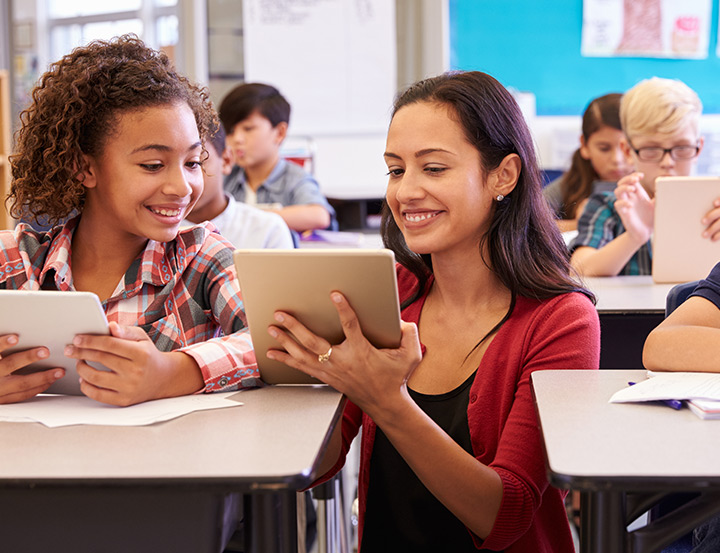Assistive technologies include, but are not limited to, the following:
Allows any electronic text that can be highlighted to be read aloud by a computer or mobile device.
Allow the individual to scan text in print mediums and convert it into voice. Some versions include an in-built dictionary that will display the definition of a word and read it aloud.
Allows a computer or enabled hand-held device to be trained in how you speak and, once trained, to write down everything you dictate into any active textbox.
Enable individuals to recall, plan, practise speeches, practise pronunciations, and dictate information.
Provide an interactive learning experience; there are a large number of apps that can be used to support children across a variety of learning areas.
Use phonetic patterns to suggest words for a poor speller when a computer is not available.
Uses phonetic and grammar patterns to suggest words as each letter/word is typed.
Display a picture of a page rather than the text headings or written content of a web page.
Used to support reading and writing. Includes templates for writing, graphic organisers, grammar checkers, and study tools.
Provides support for the development of phonological awareness and phonics.
Can be used with reading software and mp3 players/iPods.
Some of the concerns raised by teachers, parents and children about the use of AT include: the cost of purchasing multiple software titles; the need to switch from one application to another; and, the lack of integration between the applications recommended and those used by the school. Companies such as Microsoft and Apple have responded to these concerns and have embedded a variety of different AT tools into their products.
Examples of effective AT options for the student with a learning disability:
- The use of multimedia and electronic information allows children with reading disabilities to improve their comprehension of a topic or idea without being dependent on their reading ability;
- Computers and word processors can reduce the burden of editing and re-writing assignments, making the writing process faster and allowing children to work more independently;
- A photo taken with any device that has a camera may be used instead of copying information from a whiteboard. This information can be stored digitally and in some cases converted to text;
- An MP3 recorder on any device can record ideas and help overcome short term memory difficulties.
When should assistive technology be introduced?
Some children will find it very beneficial to use assistive technology and educational software to support the early development of literacy skills and letter-sound awareness. Other children will find that their need for AT does not emerge until much later in their education.
Matching the child’s needs with the use of assistive technology should happen when the need arises.
Early on in Primary school, children are more likely to benefit from the use of educational software and online learning programs to help support reading and spelling development. Additionally, the use of iPads, tablets and interactive whiteboards can effectively combine language (either spoken or written) and visual images to facilitate learning and reduce cognitive load. However, children’s use of assistive technology should be monitored, and the primary focus of support should still be on providing high quality literacy and numeracy instruction.
In Upper Primary and Secondary school, the use of AT may be extended to the provision of assistive technology to accommodate for the difficulties that the student may be experiencing. Software such as Text to Speech allows for better comprehension of information and independent learning, whilst software to support the writing process can be introduced to assist with the high demand on writing in the later years of school.
Technology to assist with organisation, study skills, time management and memory can be introduced at any stage.

